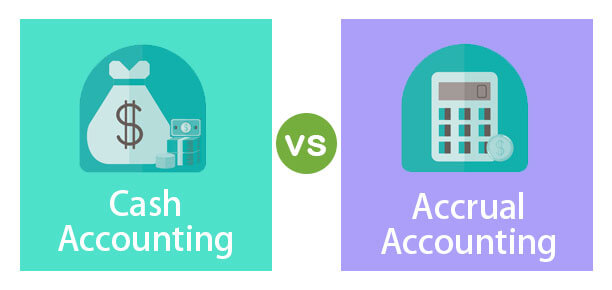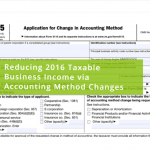How a SAAS Startup can Convert from Cash Basis to Accrual Accounting
When it comes to growing a SAAS startup (a company has subscription based software or app products) most founders are super-focused on growth, but aren’t always aware of the tax laws and something called accounting methods. For some entrepreneurs or small business owners, finances can be an afterthought to bigger ideas and problems they are trying to solve.
But having accurate accounting is actually tightly tied to growth. Having a thorough understanding of a company’s numbers can help entrepreneurs make better decisions about growth, ad spend, marketing, and hiring. Solid financials help de-risk your startup’s next venture capital round. One of the many financial decisions startups have to make is which accounting method to use: cash-basis or accrual. When revenue or expenses happen, it’s your bookkeeper’s job to record these into your company’s accounting system.
Pivot, a CPA firm, published an article titled Why cash basis accounting could end your sinking startup that mentions “while there are pros and cons to each approach, the bottom line is that cash-basis accounting can limit your view of the financial health of your business.”
 (image credit: wallstreetmojo)
(image credit: wallstreetmojo)
Cash-Basis vs Accrual Accounting: A Quick Overview
- Cash-basis accounting – recognizes revenue and expenses based on cash inflows and outflows. If you were using the cash-basis method, you would record an expense when you paid a bill, even though that might not necessarily be the same time that you incurred the expense. Cash basis is a single-entry method of bookkeeping. Transactions are only recorded when the money enters or leaves your business’ bank account. It provides a simple view of how much liquid cash you have on hand at any given time but does not factor in pending debits or credits.
- Accrual accounting – on the other hand, ignores cash inflows and outflows. Instead, the accrual method tracks earned revenues and incurred expenses. Accrual accounting can often provide a clearer picture of overall business health. Accrual is a double-entry method of accounting where the number of debits must equal the number of credits. This approach ensures that the basic accounting equation of net income (assets = liabilities + equity) is always in balance. This system allows you to factor in the impact of business loans and other debts, while also factoring in impending cash flow to your business from clients or investors. The other significant difference is that you will be paying taxes on money still owed.
VC Investors want to See Accrual Accounting
When a business takes outside money, they need to have a firm understanding of their books, since investors usually demand transparency. Investors want to see the performance of your business over time. They do that by analyzing things like operating margin and profit margin. They use that information — along with market analysis — to project future profits and decide if you’re a solid investment. Companies that raise venture capital need to have accurate books – in fact, a company’s executives typically promise recurring delivery of accurate financial records to venture investors in the funding documents. Investopedia explains that only the accrual accounting method is allowed by generally accepted accounting principles (GAAP).
Do you need GAAP? If you are planning to become a venture-backed high-growth startup business, then yes your company should have as close to GAAP financials as soon as possible. And keeping track of how the company is growing revenue and spending it’s cash is very important, especially if a major corporation was to try and purchase / acquire you for hundreds of millions of dollars, or if you are raising outside funding from a professional investor.
Is your startup planning to pitch and raise a VC funding round in 6 months?
So before you march into an investor pitch meeting, armed with your accounting ledger prepared with the cash-basis method, you should consider changing your accounting method to Accrual. Accrual accounting allows you to show investors the info they need to evaluate investment risk. Using the accrual method, your firm matches revenue earned with expenses incurred to generate that revenue. The accrual method also provides a balance sheet, which shows future cash collection and debts. This is a more complete picture for investors looking to evaluate your business.
Great, so if you have decided to make the switch to improve your next board meetings with investors, get through an annual financial statement audit, complete your series A financing, or for an IPO.
How do you switch a SaaS Startup from cash to accrual?
An article by Indinero points out that besides the fact the accrual method is preferred by investors and business analysts, that it also has some business benefits as well. Stating that “rapidly growing SaaS companies want these three things from their financial reports”:
- Insight
- Clarity
- Confidence
The Indinero article also mentions that SaaS customers subscribe for the right to use software (enterprise, planning, accounting, financial, marketing, design, etc) and service (i.e., maintenance, support, and updates) for a given period (usually on a monthly or annual basis). The revenue is recurring, and fees collected monthly, quarterly, or annually. Some subscription businesses use pay-as-you-go, term subscriptions, or subscriptions paid upfront to use their software and services. The accrual method can capture all manner of recurring revenue and assign the cost of goods and services to the same period and services for a clear picture of your financial position.
As SaaS revenue streams have become more flexible, double-entry bookkeeping has remained integral to running a subscription business model. A chief reason for that is the matching principle, a rule for recording expenses in the same period that related revenues are earned on the income statement. The expense then becomes a liability on the balance sheet for the end of the period. Tying revenue to costs of goods sold shows you how and when an expense (i.e., payroll) relates to revenue in an accounting period. With an accrual method of accounting, SaaS gets insight, clarity, and confidence.
Limitations of cash accounting for SaaS software product subscription business model companies
The four most common reasons SaaS companies switch from cash to accrual accounting are:
- Investors want to see accrual-basis financial statements (balance sheet and income statement)
- Generally accepted accounting principles (GAAP) compliance is required for public companies
- A financial statement audit
- A series A investment round
Conversely, there comes the point when SaaS CEOs come up against the limitations of cash basis. These limitations are:
- It can’t track monthly recurring revenue (MRR).
- It strictly records revenue when cash changes hands and blurs cash flow.
- It doesn’t account for liabilities and assets within an accounting period making it tough (if not impossible) to see trends in your business performance.
How to convert to accrual accounting
Even if accounting is not your thing; and running your business is your thing. It’s helpful to know what to expect when converting from cash to accrual accounting.
How does YOUR revenue work?
You know your business better than anyone else. That’s why for a data-heavy project like this, knowledge transfer is one of the most critical steps to switching to accrual-basis accounting. Huckabee CPA can work closely with you to make sure that your management team understands how your revenue (and your expenses) work.
Converting revenue and expenses to accrual takes time
Your accounting team will collect transaction data going back to the start of the fiscal year. They will need to review each transaction to create the business financial reports investors want to see and build your specific revenue recognition process.
Six steps to convert your books from cash to accrual:
- Review and book all accrued expenses.
- Subtract cash payments for wages and invoices that should have been recorded in the previous month (aka accounting period).
- Account for and record prepaid expenses. An example of a prepaid expense is insurance.
- Add accounts receivable, which represent sales or bills issued.
- Reverse cash receipts for sales incurred in the previous accounting period and adjust the current month’s net income or loss.
- Subtract customer prepayments and record them as short-term liabilities.
Hopefully, you have a better understanding of why investors want to see your financials on an accrual basis. The accrual accounting method provides more immediate insight into what is happening with revenues and expenses in any given period.
Why would you—the business owner—want to see things this way?
What’s in accrual accounting for SaaS startup company CEOs?
If you struggle to handle tremendous growth (in sales or inventory), accrual accounting will help you manage. Consider these advantages:
- Accrual is better for knowing where your money is going. When you know your expenses, you can set the best price for your products or services.
- Accrual provides a better way to track payments and their corresponding benefits. Remember that professional association that you never get around to and costs $1,000 a year? Accrual can help you identify and cut out wasteful spending.
- Are you falling behind with accounts receivable? Are you paying late fees? Accrual accounting provides the consistency and clarity you need to prevent overpaying and take action on AR.
- When you use cash accounting, you can misrepresent revenues (not record deposits) and expenses (show payments after they happened), leading to risky financial practices.
We can’t close on accrual accounting without mentioning its effect on SaaS business taxes.
Let the IRS know about the switch in your tax accounting method
The IRS doesn’t care what accounting method that you use (usually cash or accrual) to manage your business. The method is meant to be useful to a business owner, management, and investors. You can switch from cash to accrual to better manage your business and leave the IRS out of it.
The IRS cares about the tax accounting method used to file your return. It’s true that when a company reaches a threshold in revenues or inventory it’s required to be GAAP compliant.
Protip: Do not confuse GAAP for an accounting method. Accrual accounting is the GAAP compliant accounting method used in the U.S.
Regardless of these thresholds, if your business’s tax accounting method changes, you need to file the Form 3115, the Application for Change in Accounting Method. Huckabee CPA can help with filing your Form 3115 in a manner that is timely and correct.
Conclusion
A few things to keep in mind, is that the accrual accounting method is significantly more complex than the cash method. Companies face the challenge of tracking unearned revenue and expenses, and there are more advanced accounts involved, like accounts payable and receivable.
In addition, the accrual method requires double-entry bookkeeping, so you’ll need robust accounting software — like QuickBooks or NetSuite — in order to keep track of your liabilities. According to Brex, another downside to accrual accounting is the lack of visibility into cash flow. When it comes to cash flow, the accrual method offers an incomplete picture. Your account ledger or income statement may show thousands of dollars in sales revenue at any given time; however, you might not have that cash on hand for months. Companies can combat this inefficiency by preparing a monthly cash flow statement, which projects how much money will flow in and out of the business.
If you have any questions feel free to reach out, and request a free consultation.












